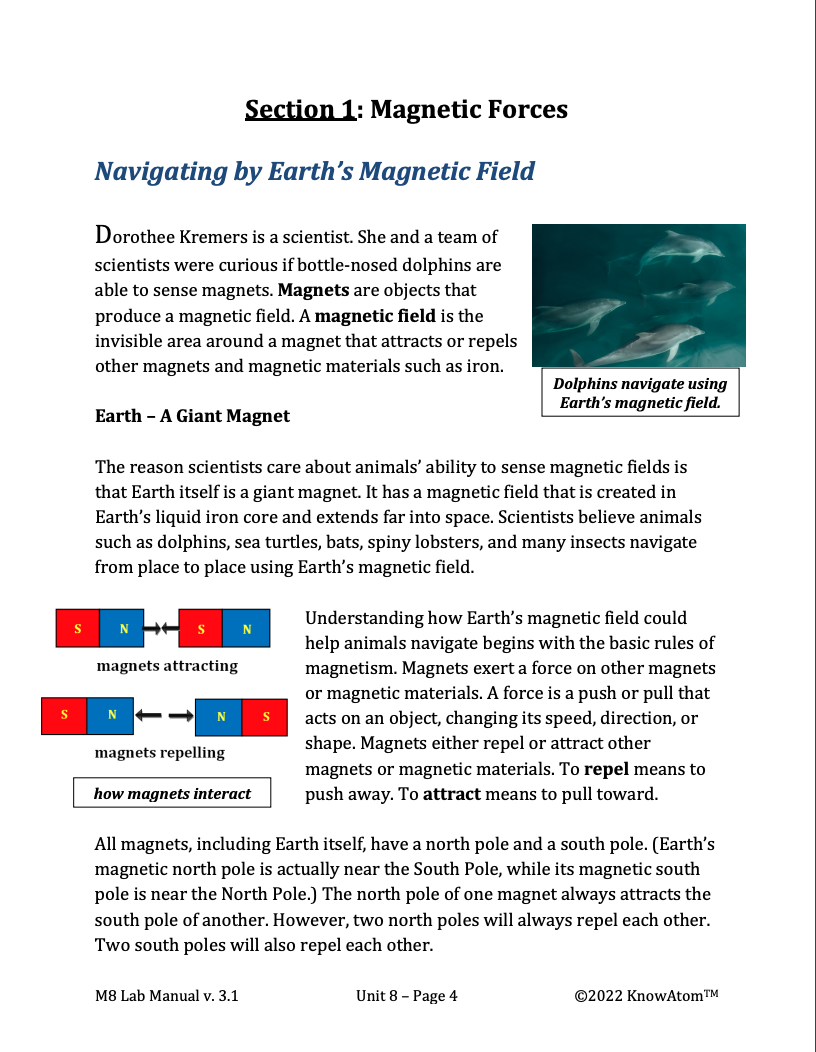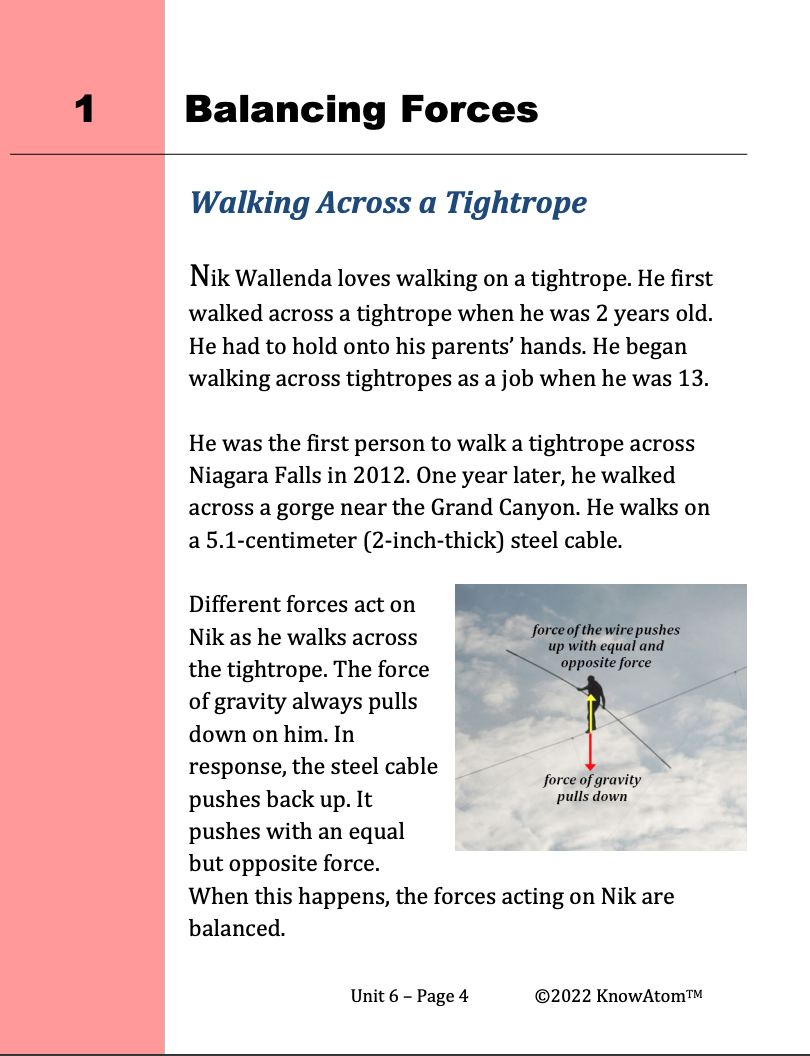
In kindergarten, students work towards developing routines and practices that scientists use to investigate phenomena and solve problems. This page is an extract from lesson 5 where students build on their weather observation skills as they observe and record local weather data to analyze weather patterns in their geographic area. Students continue to collect weather data over several months as they move onto the next lessons to build on their weather patterns analysis.

In this unit, students explore the properties of different kinds of waves and the relationship between waves and energy. In this lesson, students investigate how waves can be used to communicate and transmit information. This page highlights key components of this lesson.

Kindergarten students start to develop the practices that scientists use to gather data, make and test hypotheses, and share their findings. During this unit, students will ask questions and make observations as they explore weather patterns and investigate how the sun heats different Earth materials. This page is an extract from lesson 9 where students conduct an experiment to analyze how materials are warmed differently in the sunlight than they are in the shade.

In Kindergarten, students begin to develop practices that scientists and engineers use to gather data, make and test hypotheses, and design prototypes based on evidence to solve problems. During this lesson students will ask questions, engage in Socratic dialogue, gather evidence through experimentation, and solve problems as they explore how the sun heats different Earth materials. This page is a high-level extract from lesson 10 where students build on their understanding of the sun’s energy to heat objects by conducting an experiment to investigate how color affects heat absorption.

In this first unit, students learn to differentiate between the practices of a scientist and those of an engineer. Students ask questions, make observations, and collect data as they explore weather patterns on Earth and investigate how different Earth materials are heated by the sun. During this final lesson of the unit, students act as engineers by designing a prototype that can reduce the warming effects of the sun.

In Unit 2 of Kindergarten, students explore characteristics of living things and investigate what plants and animals need to survive. They will also discover plant and animal life cycles, and learn about habitats. This page is a high-level extract from lesson two, where students use patterns of shared characteristics to help them sort photos of different things into groups according to whether they are living, once-living, or nonliving.

In this Life Science unit, Kindergartners explore plants and what they need to live and grow. This page is a high-level extract of lesson four in which students make models of adult sunflower plants to explore how plants have different parts that help them get what they need to grow.

In the second unit of Kindergarten, students explore living things and discover what plants and animals need to survive. This page provides a snapshot of lesson five which has students conducting a class experiment with bean plants to observe what they need to live and grow.

In this unit, students are introduced to living things on Earth. They begin by exploring the differences between living and nonliving things and then investigate what plants and animals need to survive by watching bean plants grow and observing a cricket in its habitat. They then create a model to show how living things depend on other living things and their environment to survive, and can change their environment to help them get what they need.

In this unit, students explore how forces cause an object’s motion to change. They begin by exploring how objects move in different directions when they are pushed or pulled, and then investigate how changing the strength of a force changes the distance an object moves.

In the final unit of Kindergarten, students explore how forces and how different factors can affect an object’s motion. They explore how objects move in different directions when they are pushed or pulled, and then investigate how changing the strength of a force changes the distance an object moves. Finally, students discover how friction can change motion.

In this unit, students discover that pushes and pulls are forces that change the motion of an object. They begin by exploring how objects move in different directions when they are pushed or pulled, and then investigate how changing the strength of a force changes the distance an object moves. They then use a model to see how friction affects the distance and speed with which an object moves over a surface.

In this unit, students analyze the science phenomena of different forces that can act on all structures. They begin by exploring how forces act on different materials and shapes. They then use what they know about forces to design a skyscraper prototype in this lesson, evaluating how their design relates to the ability of the skyscraper to withstand the weight of the structure and the people on it, as well as the force of wind.
Standards citation: NGSS Lead States. 2013. Next Generation Science Standards: For States, By States. Washington, DC: The National Academies Press. Neither WestEd nor the lead states and partners that developed the Next Generation Science Standards were involved in the production of this product, and do not endorse it.
